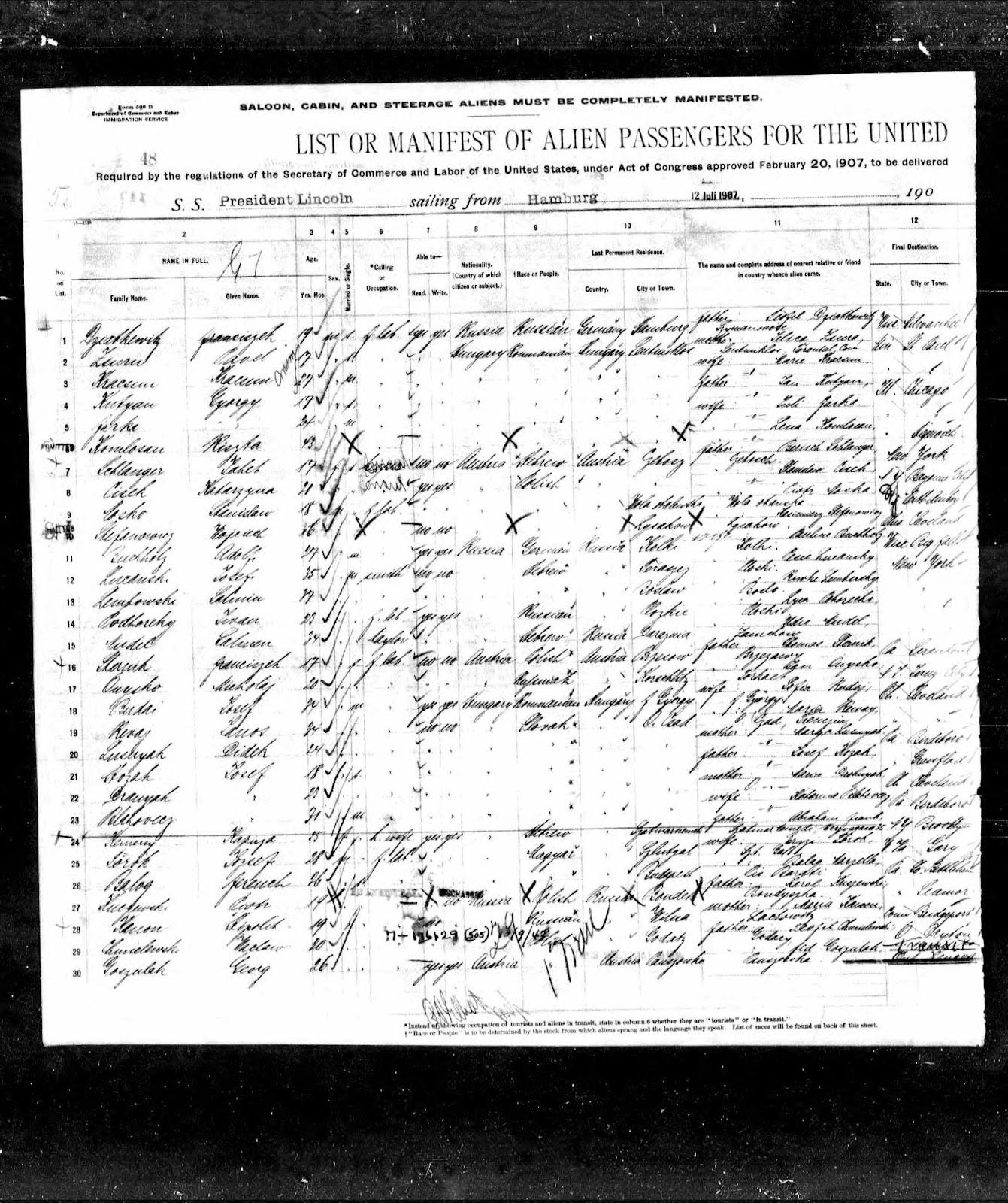An immigrant's journey to citizenship
Tracing my family’s roots from Slovakia to America through Ellis Island
My first trip to Ellis Island in New York City was back in 1998, when I was just starting to scratch the surface of researching my family history. I remember finding my surname while I was there, but that was the extent of my search. Fast forward to March 2023, when I visited Ellis Island again and had a much better understanding of my family’s journey from Eastern Europe to America. Standing in the same halls as my immigrant ancestors was powerful.

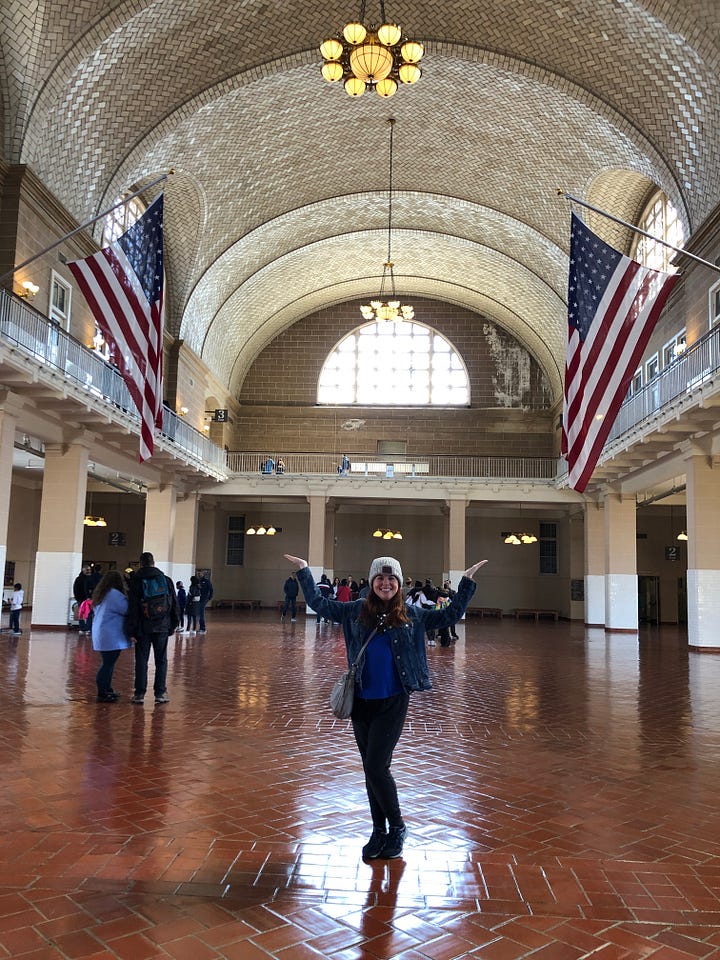
My 2nd great-grandfather, Andrew J. Kracum, has been documented under many variations of his name, and although he immigrated to the United States through Ellis Island, that’s not where his name was changed.
It’s a common myth that surnames were “Americanized” when immigrants arrived at Ellis Island, but names were actually recorded at the port of departure, not arrival.
Andrew Kracum, a native of present-day Slovakia, arrived in New York City on 26 July 1907 on the ship President Lincoln. The ship manifest, completed at the point of departure in Hamburg, Germany, listed his surname as “Kracsun,” which was the true, original spelling.
In the 1910 census, Andrew is listed as “Andro Cristmas,” living with his parents Anna and Michael. Why the name change? Kracsun translates to Christmas in English, so they were likely trying to Americanize their surname.
Becoming a U.S. Citizen
In order for Andrew to become a citizen, he had to follow the naturalization process, which took at least five years. According to the National Archives, “After residing in the United States for two years, an alien could file a "declaration of intention" ("first papers") to become a citizen. After three additional years, the alien could "petition for naturalization" (”second papers”).
Andrew filed his declaration of intent on 14 May 1917 in Luzerne County, Pennsylvania. This document is full of helpful genealogical information, including birthplace, current residence, occupation, and more. Interestingly, it notes that the tip of one of his fingers was missing!
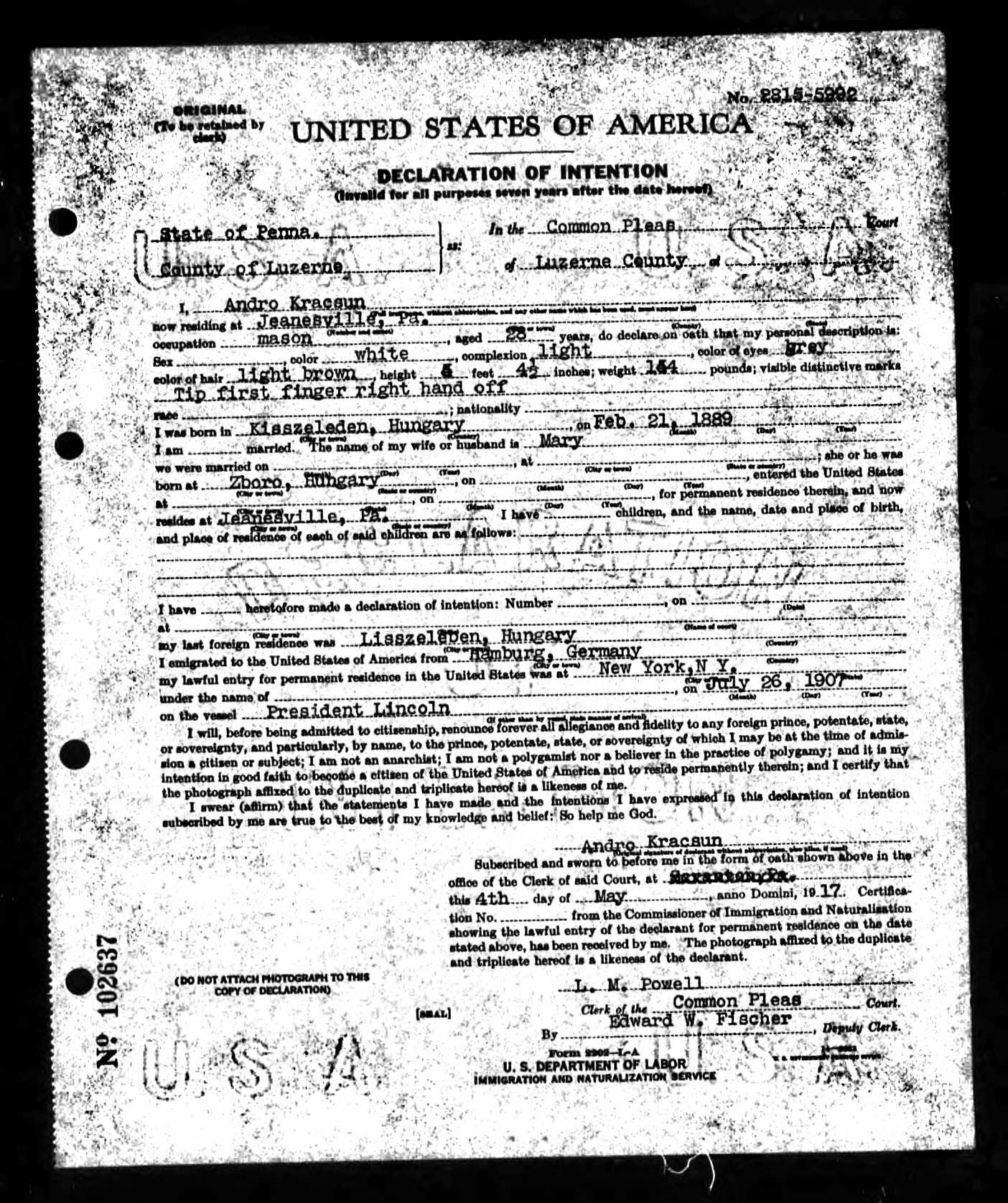
The next step in the naturalization process was filing his petition for naturalization (or “second papers”), which he did on 28 November 1919 in Scranton, Pennsylvania at the U.S. District Court. This document also includes valuable genealogical information, including the names and birth dates of his children.
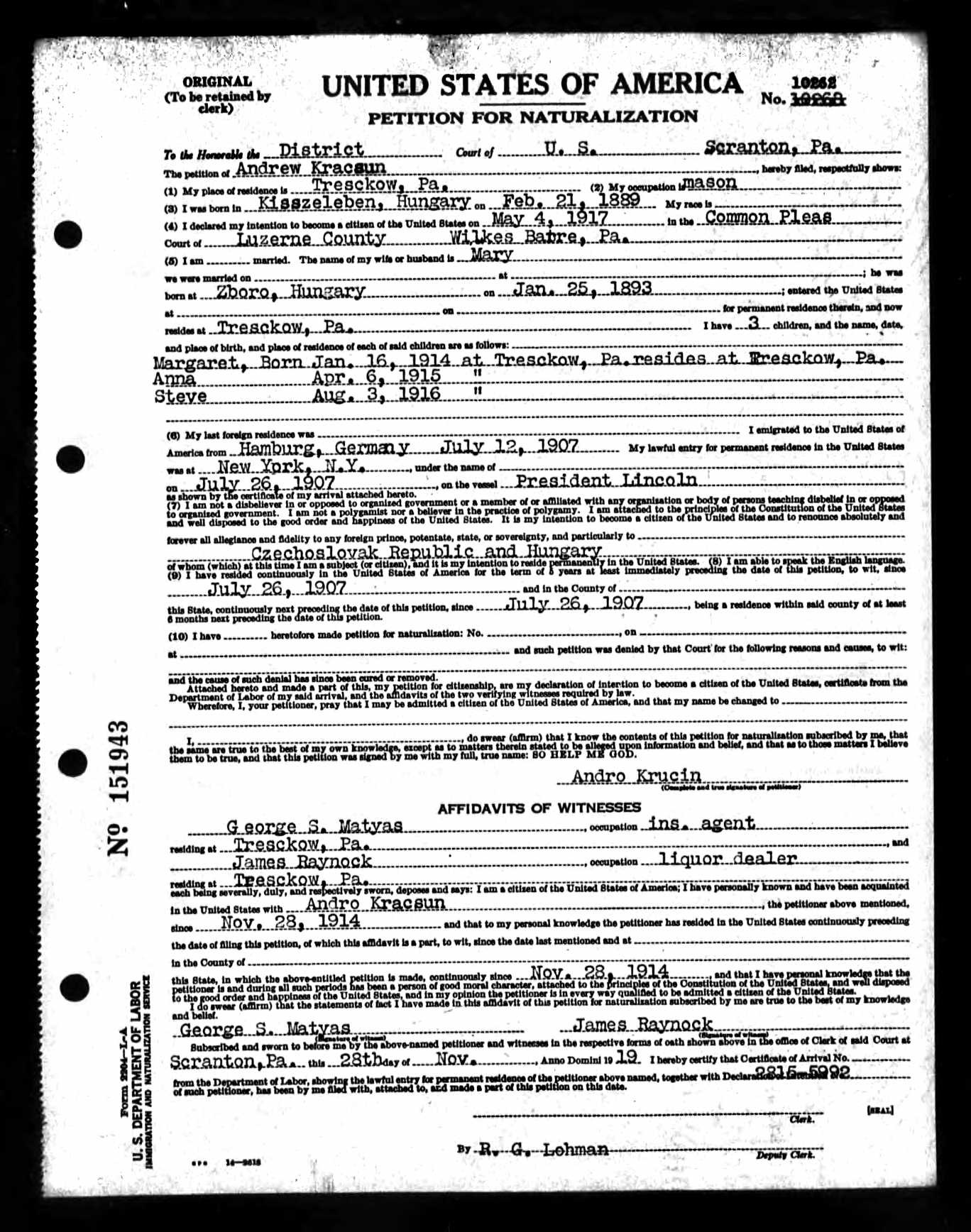
The final step for Andrew to become a U.S. citizen was signing his oath of allegiance, which he did on 23 June 1921.
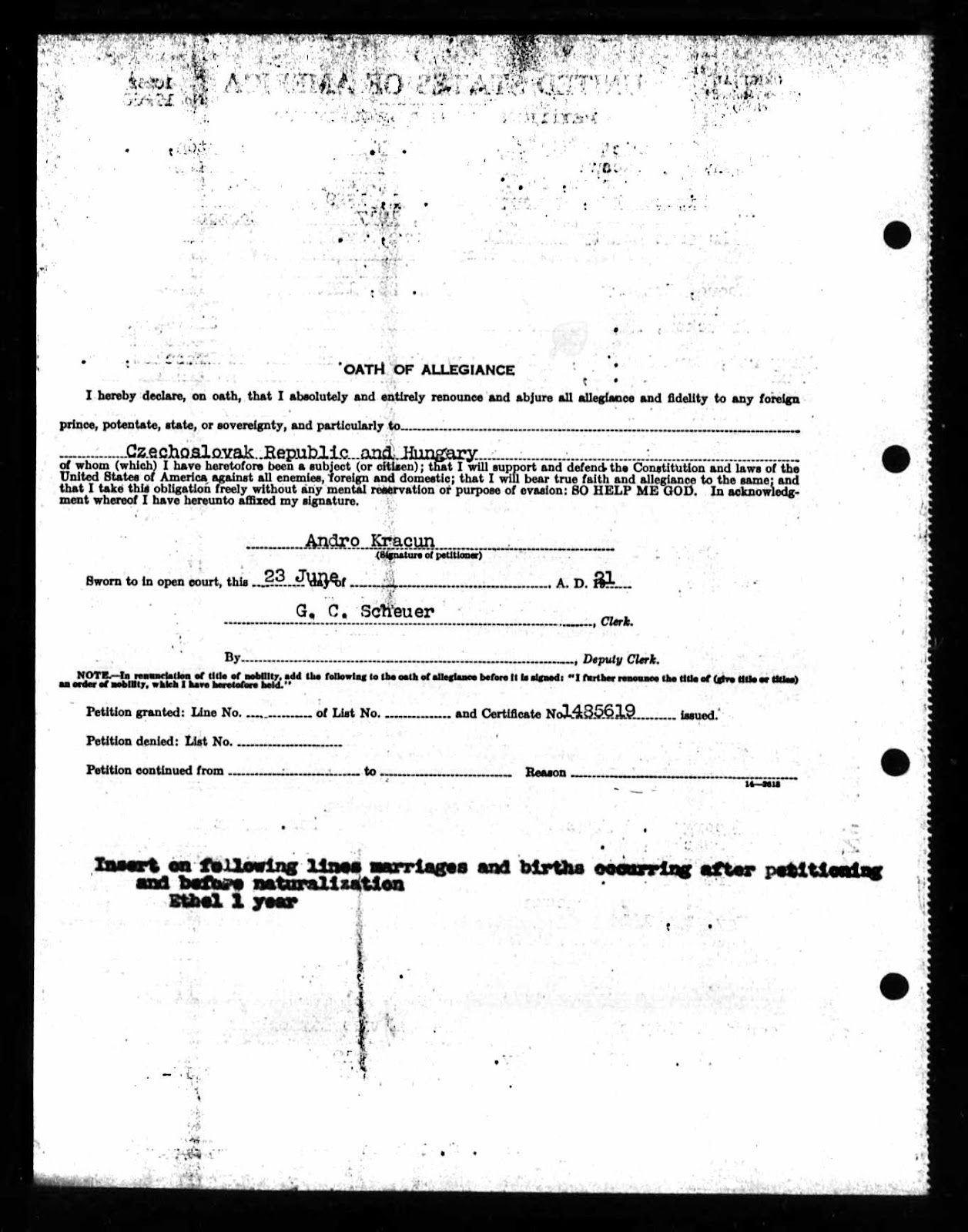
How to find immigration records
If you believe your ancestor arrived at the Port of New York (Ellis Island) between 1820 and 1957, you can search their passenger database here.
Many naturalization records (including declaration of intent, petition for naturalization, and oath of allegiance) are available through the National Archives and Records Administration (NARA), with a large portion of them digitized and searchable on Ancestry.
If you want to order a copy of your ancestor’s C-File (Naturalization Certificate File), you’ll need to request it through the US Citizenship and Immigration Services (USCIS) Genealogy Program. Anyone who naturalized 27 September 1906 – 31 March 1956 should have a C-File. The process starts with an Index Search Request. The fee is currently $65 per request, but good news! USCIS recently reduced its fees for the genealogy program (hooray!) to $30 per request, effective April 1, 2024. USCIS will search their index for your ancestor to determine how many records, what kind(s) of records, where those records are currently located, and how to request the records.They have a pretty long backlog (I’m still waiting for a response from August 2023), but they’ll eventually send you a letter with your search results that “will identify all file references found in the index and provide instructions and additional information necessary to request the file(s) from the USCIS Genealogy Program, the Freedom of Information Program, the National Archives, or a state or local courthouse.”
Happy hunting!
This post was inspired by 52 Ancestors in 52 Weeks.






